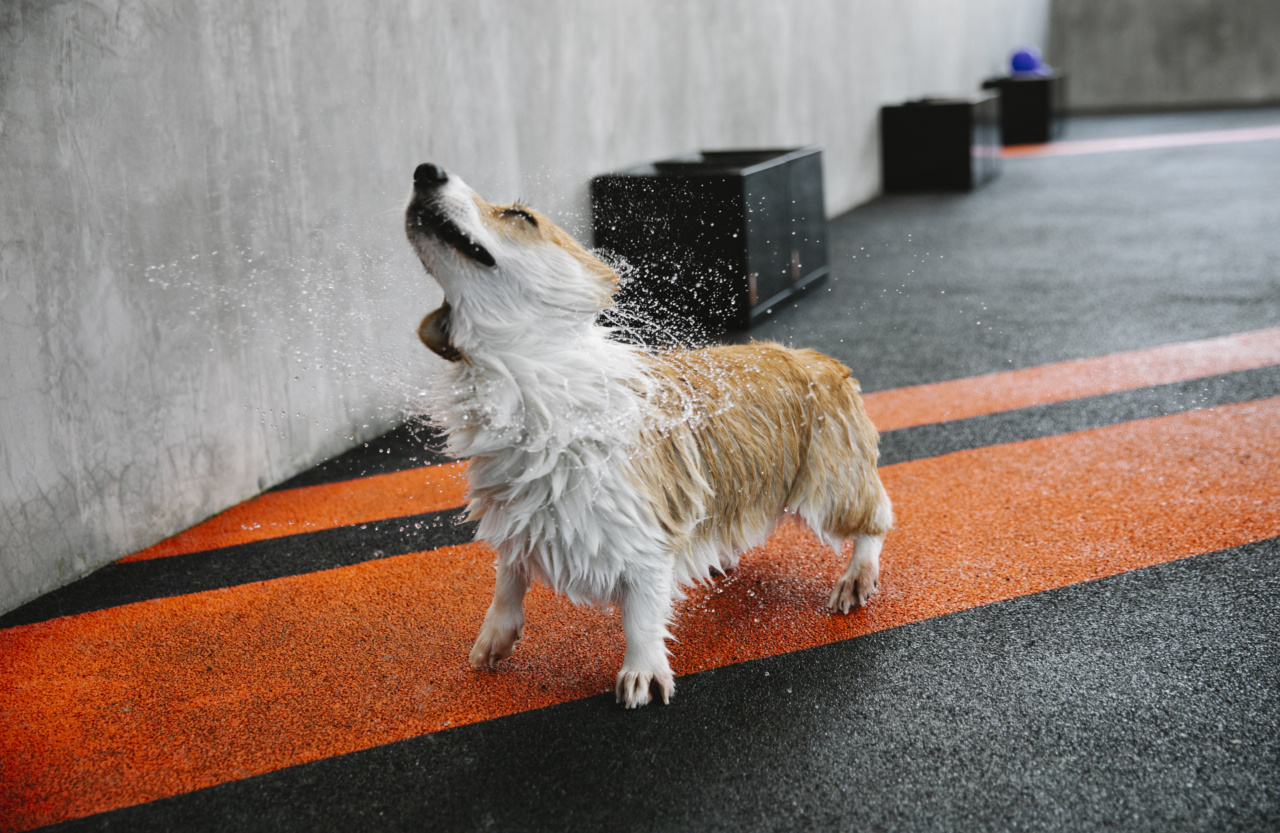Many dogs love water and enjoy splashing around in lakes, rivers, and pools. However, there are some dogs that exhibit fear or anxiety when it comes to water, a condition known as canine aquaphobia.
If your furry friend is afraid of water, it can limit their opportunities for exercise, play, and even pose a safety risk if they refuse to swim. Fortunately, there are techniques you can employ to help your dog conquer their fear and develop a positive association with water.
Understanding Canine Aquaphobia
Canine aquaphobia is more common than you might think and can stem from a variety of reasons. Some dogs may have had negative experiences with water in the past, such as a traumatic incident or being forced into the water.
Other dogs may be naturally anxious or fearful and perceive water as a threat. Additionally, certain breeds are known to be less water-friendly than others, such as sight hounds or toy breeds.
It’s important to note that each dog is unique and may require different approaches when it comes to overcoming their fear of water.
Patience, consistency, and positive reinforcement are key to helping your dog feel more comfortable and confident around water.
1. Gradual Exposure
One effective technique for tackling canine aquaphobia is gradual exposure. Start by introducing your dog to water in a controlled and calm environment.
Fill a small kiddie pool with a few inches of water and encourage your dog to approach it at their own pace. Use treats, toys, and plenty of praise to create a positive association with the water.
Once your dog is comfortable with the kiddie pool, gradually increase the water level and repeat the process until they are fully immersed. This step-by-step approach allows your dog to build confidence and trust at their own pace.
2. Positive Reinforcement
Positive reinforcement is key in helping your dog overcome their fear of water. Reward every small progress your dog makes, whether it’s just approaching the water or taking a few steps in.
Use their favorite treats, verbal praise, and petting to reinforce their brave behavior. Over time, your dog will associate water with positive experiences and become more willing to explore and engage with it.
3. Harness the Power of Play
Engaging your dog in play can help distract them from their fear of water and create a positive and enjoyable experience. Start by tossing their favorite toy near the water’s edge and encourage them to retrieve it.
Gradually move the toy further into the water, always ensuring your dog feels safe and comfortable. Playing games like fetch or tug-of-war can help your dog associate water with fun, reducing their anxiety over time.
4. Create a Safe Space
Your dog may feel more secure and less anxious if they have a designated safe space near the water. Bring along their favorite blanket or bed and create a cozy spot where they can relax and observe the water from a distance.
Allow them to approach the water at their own pace and reinforce positive behavior with treats and praise. Having a safe space can help your dog feel in control and gradually build their confidence.
5. Professional Training
If your dog’s fear of water persists despite your efforts, seeking the help of a professional dog trainer or behaviorist can be beneficial.
They can assess your dog’s individual needs and create a customized training plan to address their specific anxieties. Professional trainers have experience working with dogs with various fears and phobias, and they can provide valuable guidance and support throughout the training process.
6. Familiarize with Water Sounds
In addition to gradually introducing your dog to water, it’s also helpful to familiarize them with the sounds associated with water. Play recordings of gentle waves, running water, or rain showers at a low volume in their presence.
This exposure can help desensitize your dog to water-associated sounds, making the actual experience less alarming and overwhelming.
7. Lead by Example
Dogs are highly observant creatures and often take cues from their human counterparts. Show your dog that water is nothing to fear by leading by example.
Join them in the kiddie pool or dip your toes in a shallow body of water to demonstrate that it can be enjoyable and safe. Your dog is more likely to follow suit when they see their trusted companion enjoying the water.
8. Introduce a Doggy Life Vest
If your dog is hesitant about swimming or venturing into deeper water, consider investing in a doggy life vest. These vests provide buoyancy and help your dog feel more secure in the water.
Gradually introduce the life vest during your water training sessions, allowing your dog to get used to the feeling before progressing to deeper water. The extra support can give your dog the confidence they need to overcome their aquaphobia.
9. Be Patient and Consistent
Remember that conquering canine aquaphobia takes time and patience. Progress may be slow, and setbacks are possible. Be consistent with your training sessions and never force your dog into the water or overwhelm them.
Celebrate every small achievement and give your dog plenty of encouragement and positive reinforcement. With time and repetition, they will develop a more positive outlook on water and overcome their fears.
10. Seek Professional Help if Needed
If despite your best efforts your dog’s aquaphobia persists or worsens, it’s important to seek professional help. A qualified veterinarian or a dog behaviorist can provide specialized guidance based on your dog’s individual needs.
They can assess the underlying causes of your dog’s fear and tailor a training plan to address it effectively.






























